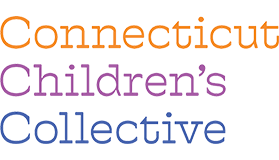A Light in the Storm
May is Mental Health Awareness Month. What research has shown time and again is that early childhood experiences determine the trajectory of a child’s life. How many words are spoken and how often books are read to a child can impact a child’s ability to learn and be literate. Equally important is the environment in which a child grows. Are parents and caregivers abusive or negligent? Is the child receiving well-visits regularly with a pediatrician? Do the parents or caregivers have social supports and guidance from family or community members? Is there consistency in love and basic needs being given to the child? Is there exterior violence with which a child and her family must contend?
The term ACEs (Adverse Childhood Experiences) originated in a groundbreaking study conducted in 1995 by the CDC and Kaiser Permanente health care. In that study ACEs referred to three specific kinds of adversity children faced in the home environment: various forms of physical and emotional abuse, neglect, and household dysfunction. The findings indicated that ACEs are common and do not discriminate between race, ethnicity, gender, or socio-economic status. The study also found a distinct correlation between the number of ACEs and a greater increase in poor lifelong outcomes ranging from increased risk of heart disease and depression as well as poor academic achievement and early death.*
This is the grim news. The good news is that we, as a society, have the tools with which to reverse the effects of ACEs. Those tools are loving relationships with a caring, consistently present adult. Toxic stress, when our body’s fight or flight mechanisms kick in and aren’t given the opportunity to subside, causes havoc in a developing child’s brain and body. Learning pathways in the brain are shut down making it difficult for a child to learn and concentrate, their bodies are always on high alert. Love though, caring constant, calming support can actually heal and reverse the damage done to a brain. It is miraculous.
It is what our partners that comprise the Connecticut Children’s Collective do every day. They teach parents and caregivers how to remain calm and confident in their interactions with their child. They provide resources to parents and caregivers to alleviate the daily stress of providing for their family. They provide opportunities for parents and caregivers to remain connected to their community and other parents and caregivers who can offer guidance and support. They provide learning and play opportunities for babies and young children cradle to career. They are the light in a potentially devastating storm. They are the hope that so many of our families and children need. We are grateful to them, and know that our communities and our society is better because of them.
This article explores this topic further.
*Source: Center on the Developing Child, Harvard University



